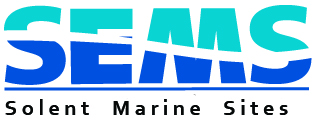Mooring and Anchoring
Moorings can be categorised as conventional swing moorings, trot moorings and ‘eco-moorings’. Other forms of mooring include bolts attached directly to rock (subtidal and intertidal), pontoons and pile moorings.
This category encompasses the following activities:
- Operational use of berths, moorings, anchorages including the presence of these structures and vessels using them. Includes consideration of vessels when berthing/berthed, mooring/moored, anchoring/anchored.
- Includes impacts from anchors and impacts of boat when at anchor or mooring.
- Does not include impacts from boats getting to and from moorings, these should be assessed in the relevant 'recreation' category.
- The activity of anchoring generically and use of allocated anchorage areas where ships are permitted to anchor inside and outside harbours/ports. Includes consideration of vessels when anchoring, anchored or weighing anchor
Advanced Mooring Systems (AMS), or eco moorings, are mooring systems designed to have less impact on the sea bed than conventional swing moorings. They aim to minimise interaction with the seabed to prevent abrasion and therefore the potential to damage sensitive habitats. The Green Blue has a guide to anchoring and mooring.
ReMEDIES
The LIFE Recreation ReMEDIES: ‘Reducing and Mitigating Erosion and Disturbance Impacts affecting the Seabed’ project (LIFE 18 NAT/UK/000039) which ran from July 2019 to October 2024 aimed to improve the condition of seagrass beds and maerl in five Special Areas of Conservation (SACs) including the Solent. This was achieved by restoration, demonstrating suitable management options and reducing recreational pressures, such as the use of Advanced Mooring Systems (AMS). As part of the project, trials of AMS were installed as both boat moorings and as markers to reduce impacts to the seabed. An information note summarises the lessons learnt.
Watch a YouTube video that looks at the use of Advanced Mooring Systems as an alternative to traditional moorings. Experts in the field share more about the designs of these systems as well as their potential to limit the impact of recreational boating on seabed habitat.
MMO Management of Moorings and Anchoring
In December 2021, the Marine Management Organisation (MMO) introduced a phased voluntary approach for the management of anchoring in Studland Bay Marine Conservation Zone (MCZ). In June 2022, the area will be increased to cover the majority of seagrass beds to form a permanent voluntary no anchor zone. Studland Bay is very popular with boaters and the level of recreational activity, particularly anchoring activity within the seagrass beds in the MCZ, can result in damage to the seagrass when they anchors make contact with and dig into the seabed.
Potential Impacts
- Abrasion/disturbance of the substrate on the surface of the seabed, e.g. when mooring tackle and ground chains are lifted and inspected, maintained and replaced
- Penetration and/or disturbance of the substratum below the surface of the seabed, including abrasion
- Physical change (to another seabed type)
- Tangling and snagging of erect epifauna/epiflora
- Boats moored in the intertidal and shallow subtidal will rest on the seabed for a portion of the tidal cycle, leading to localised sediment abrasion and compaction
- Swing moorings can scour a circular region around the anchor point by the chain/line
Resources
- Good practice Guide to AMS
- The Green Guide to Anchoring and Moorings
- Recreational anchoring and mooring in Marine Protected Areas (MPAs) - ME6009
- Potential for eco-moorings as management option for Marine Protected Areas (ME6010)’.
- Recreational and commercial anchoring and mooring impacts in marine protected areas in Wales and England (ME6003)



